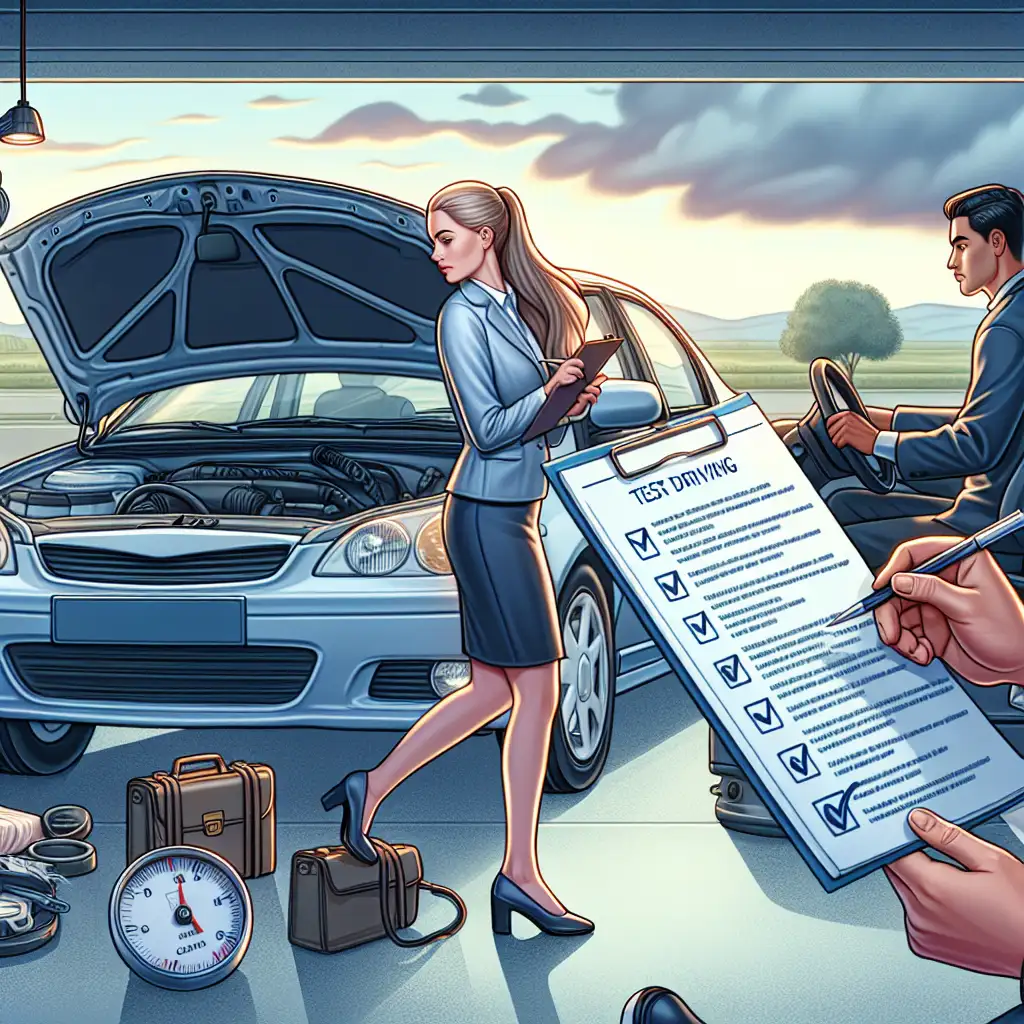Test Driving a Used Car: Checklist and Tips
A comprehensive guide on what to observe during a test drive of a used vehicle.

Buying a used car can be a smart financial decision, but it requires careful consideration and thorough evaluation. One of the most crucial steps in this process is the test drive. This guide will walk you through a comprehensive checklist and offer tips to ensure you make an informed decision.
Why Test Driving is Essential
Test driving a used car is not just about seeing how it feels on the road. It's an opportunity to assess the vehicle's condition, identify potential issues, and determine if it meets your needs. A thorough test drive can save you from unexpected repairs and ensure you get the best value for your money.
Pre-Test Drive Checklist
Research the Model
Before you even set foot in the car, do some research on the specific make and model. Look for common issues, recalls, and reviews from other owners. This knowledge will help you know what to look for during the test drive.
Inspect the Exterior
- Check for rust, dents, and scratches.
- Ensure the tires are in good condition and have even wear.
- Look for any signs of previous accidents or repairs.
Examine the Interior
- Test all electronics, including lights, windows, and the infotainment system.
- Check the condition of the seats and upholstery.
- Smell for any unusual odors that might indicate water damage or mold.
During the Test Drive
Start-Up and Idle
When you start the car, listen for any unusual noises. The engine should start smoothly without excessive cranking. Let the car idle for a few minutes to ensure it runs smoothly and check for any warning lights on the dashboard.
On the Road
- Test the brakes for responsiveness and listen for any squeaking or grinding noises.
- Accelerate to see how the engine performs and listen for any knocking or pinging sounds.
- Drive at different speeds and on various road types to assess handling and suspension.
- Check the steering for any pulling to one side or vibrations.
Transmission and Gears
Whether the car is automatic or manual, the transmission should shift smoothly without hesitation or jerking. Pay attention to how the car shifts gears and listen for any clunking noises.
Post-Test Drive Evaluation
Review Your Findings
After the test drive, take a moment to review your notes. Consider how the car felt, any issues you noticed, and whether it meets your needs. Don't rush this decision; it's important to be thorough.
Get a Professional Inspection
Even if the test drive went well, it's wise to have a trusted mechanic inspect the car. They can identify issues that might not be apparent during a test drive.
Final Thoughts
Test driving a used car is a critical step in the buying process. By following this checklist and taking your time, you can ensure that you make a well-informed decision. Remember, the goal is to find a reliable vehicle that fits your lifestyle and budget.
 CarChooser
CarChooser